
Blog
- Needing a pair of orthotics?
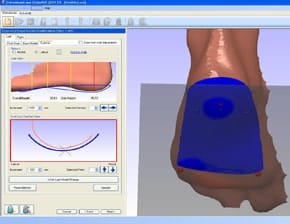
- Heard mixed messages on how effective they are?
- Aren’t they all the same anyway?
If you’ve ever even CONTEMPLATED getting orthotics – read this first!
Let me start by answering a question that goes through almost all of my patients minds at some point – nope, orthotics are definitely NOT all the same and when the right orthotic is properly designed for my patients foot using the right materials and design skills that come from years of experience (and very honestly, learning from previous mistakes that others are still making today), yes they ABSOLUTELY do alleviate foot, ankle and low-er limb pain.
In fact, orthotics couldn’t be more different – and in many ways, they should be! Let me explain while answering a few concerns I often hear:
- Are my orthotics going to be like my pair from my previous podiatrist?
- I know someone that has had orthotics before but they didn’t help him?
- What do orthotics actually do?
Let me start in answering these with the first and most important point:
The way your orthotics look and how effective they are are dependent entirely on the skills and preferences of your podiatrist! Yes – your specific podiatrist alone dictates how they are made and using the resources, materials and skills they have available at any point in time. If your podiatrist wants to heat-mold a pre-made, soft, thin orthotic and add a colourful harder piece and call that a custom-made orthotic, then that’s what you get. If you get plaster-cast and the cast gets sent to Canada for a firm, plastic-like device to come back, then that’s the orthotic you get.
What does this mean? Simply and unfortunately put, you may receive a lower quality product (often associated with a cheaper price) that claims to do the same thing, but often fails to produce the same results (pain relief!) and tends to have a shorter shelf-life. Think of it as buying make-up (clearly, this is written from a female perspective). You’re after a lipstick. Sure, you can buy an $8 lipstick from pretty much anywhere, but we know it will never compare to buying a Mac lipstick, that you’ll love and keep using until the very very end.
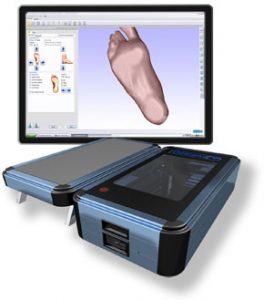
So how do I know if my orthotics will be good? Don’t be afraid to ask! They should be more than happy to talk you through the process – I LOVE talking through our orthotic design and manufacture – from the extensive testing of the range of motion of your foot and ankle joints to muscle strength, foot posture index, video gait analysis and 3D laser scanning your foot! But that’s only the part you see – it all then collides when our principal podiatrist and founder, Brenden Brown, designs every single one of our patients orthotics (yes, over all of our clinics!) himself, using his 20 years of experience and the widest range of materials I’ve ever seen as a podiatrist. BUT THEN, our CAD/CAM milling machine actually mills out the base of your orthotic, all in our VERY OWN (and very exciting!) orthotic lab, and hand finished by our orthotic technicians! It’s safe to say that it’s a little more technical than sticking two bits of material together and naming it an orthotic, and FAR more effective.
Finally, think about what your orthotics do! Orthotics have a FUNCTIONAL purpose to alter the alignment of your foot, changing different pressures and strains over your muscles, bones, joints and exactly where you’re having your pain. They address the CAUSE of your lower limb problems to provide you with long-term relief, and when designed and created right, they do this VERY well.
Happy orthotic hunting!
Dr Nina Lansdowne
Podiatrist and Superstar Blog writer
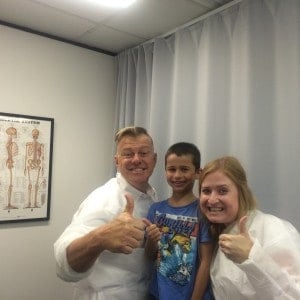
Dr Nina , BB and a good looker who happens to be our patient!
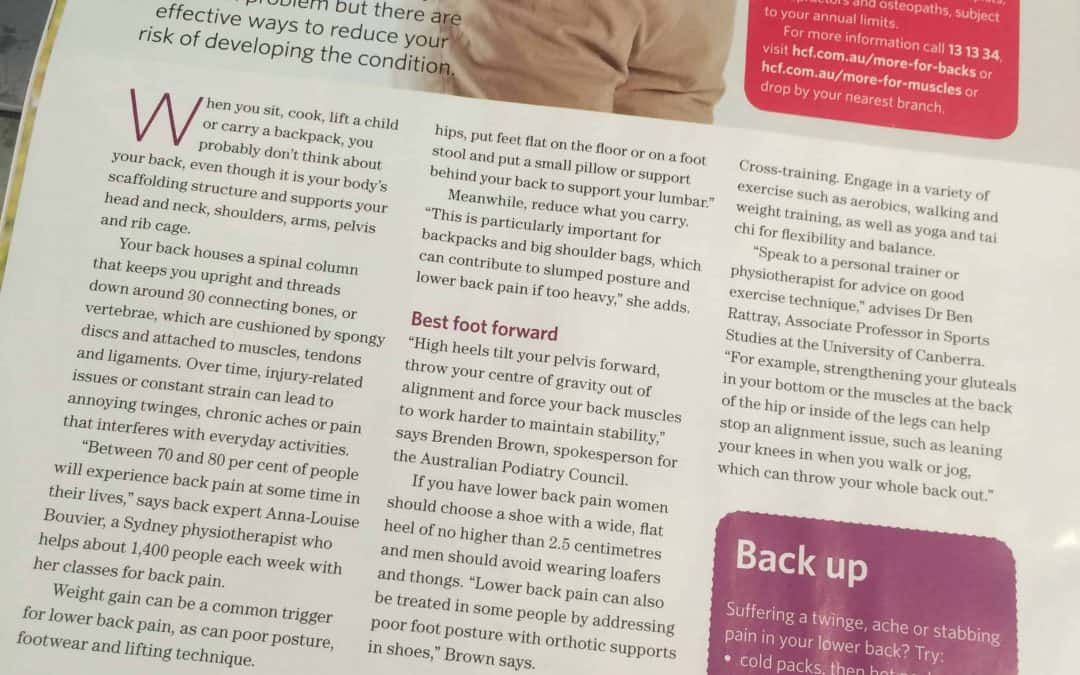
Blog, Uncategorized
If you havent come across us before you may not realise that Brenden our principal Podiatrist has for many years been considered one of the foremost experts on feet and Podiatry in Australia. He has for years been called upon to make comment as an expert. From the today show to the 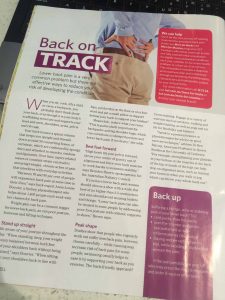 Sydney morning herald to Dolly magazine!
Sydney morning herald to Dolly magazine!
This month BB is in HCF’s Fit &well magazine, just in case you don’t get a copy or cant see and read the text here it is below.
“Best foot forward
“High heels tilt your pelvis forward, throw your centre of gravity out of alignment and force your back muscles to work harder to maintain stability,” says Brenden Brown, spokesperson for the Australian Podiatry Council.
If you have lower back pain women should choose a shoe with a wide, flat heel of no higher than 2.5 centimetres and men should avoid wearing loafers and things. “Lower back pain can also be treated in some people by addressing poor foot posture with orthotic supports in shoes,” Brown says.”
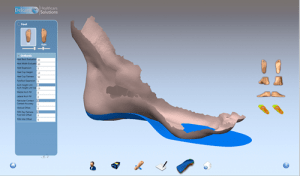
Blog, Western Weekender
 Several years ago A Step Ahead Foot and Ankle care decided that to have more control of our patients outcomes we needed to make our own orthoses in house. Patients and often their referring doctors often don’t realise that many podiatrists in fact do not make their own custom made orthoses. While they can prepare a script they have trouble really making a device that is perfectly matched to the foot.
Several years ago A Step Ahead Foot and Ankle care decided that to have more control of our patients outcomes we needed to make our own orthoses in house. Patients and often their referring doctors often don’t realise that many podiatrists in fact do not make their own custom made orthoses. While they can prepare a script they have trouble really making a device that is perfectly matched to the foot.
In our last article we described how orthoses should be prescribed. As you will see the process is fairly complex and requires a number of measurements using some specialised equipment and a great deal of clinical expertise. The junior podiatrists at A Step Ahead Foot and Ankle care who have already completed a university degree and 1000 clinical hours still are observed and work with one of our senior podiatrists for the first two years after graduation to make sure they have a strong knowledge base behind them when designing an orthoses for a patient.
Once a 3 dimensional scan and measurements are taken of both your feet, it’s time for our Podiatrist to design the orthotics. Designing each orthoses is done using Cad-Cam software and specific to each person, each person’s individual design takes approximately 15 minutes ensuring a complete match to your foot.
From here the design is sent to A Step Ahead Foot and Ankle care’s CNC mill for cutting on average this takes about 20minutes for each of the orthoses shell. As mentioned before, each orthotic is individual and subsequently there can be as little as 1 mm differences in measurements in the orthoses so ensuring we get the milling right is very important. 
After the mill has finished its very precise job, the orthoses edges need grinding so they fit comfortably into a shoe. At this time we will add covers to enhance the comfort of the device and small additions which will tweak the way you walk, such as metatarsal domes and rocker bars and possibly even more cushioning! We will also look at any further adjustments needed to change the postural position of your feet and legs. This can all add up and takes about an hour’s worth of time per pair to finish.
As you can see making a custom made orthoses can really take some time they are very complex devices with a real “handmade” component to each of them. Each device is designed to meet each patient’s specific health needs. So when people rightly ask “How come your orthotics cost …….” You can tell them because my orthoses are handmade just for me!

Blog, Western Weekender
So you have been told by your podiatrist that you need custom made orthoses…
Now we would assume these are to be made specifically for you, from a set of measurements taken from your feet and legs. Your Podiatrist will also have taken a video of your walking and or running pattern. They will have watched how you stand walk run and tested muscles and joints. Your Podiatrist will have also taken a cast or better still a 3 dimensional scan of both your feet – to be truly custom made this is essential! If your podiatrist or other practitioner has NOT done these things then frankly I would question if you were truly getting a custom made or true prescription orthotics! 
These are all the things we do for our patients at A Step Ahead foot and ankle care. (Note NOT an outline and NOT a 2 dimensional or force plate measurement – you CANNOT make truly custom made orthoses from this)
Orthotics are costly, they are in the same ball park as prescription glasses and at times the same price as some mouth plates Dentists use to correct small alignments for your teeth. Thankfully NOT as expensive as braces though! I would suggest that they are this expensive because, if they are truly prescription custom made orthotics, the time that it takes to make a pair is reasonably extensive. Add to this the cost of your practitioner’s time taking the measurements then preparing the prescription and then finally check-ups fittings and etc and it will quietly add up. We have noted a few podiatrist tell people the cost of the device only. For example “orthotics cost $400” but be warned it is a good idea to ask about associated the cost of appointments.
How about check-ups? You know your feet are ok on the first check, but 4 months later your orthoses don’t feel right. We always give free check-ups for our patients for the life of your device – if its 2 years then so be it! We don’t believe you should have to pay for a check-up of your device if there is a problem. If your friend a relative or any type of patient of ours says they are not comfortable or not happy PLEASE send them back to our clinic – it’s free and we are ALWAYS happy to see them!! It’s included in the cost of the devices and appointments whenever we fit you with orthoses at A Step Ahead Foot and Ankle Care.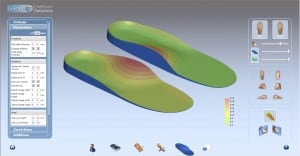
We guarantee our devices – if they flatten out, warp, the covers fall off or somehow otherwise your orthoses die an untimely death in the first 12 months we will replace your orthoses! Now you’d think this is common sense BUT if your dog eats them (don’t laugh has happened numerous times) that’s your responsibility, we will always be reasonable and we hope our patients are as well.
So there is much more than just a custom orthoses that’s in your shoe… it’s a long process of getting this very specialised device right. As we have discovered they are very specialised devices made from very specific measurements. What we have not spoken about is the very detailed equipment which makes up the mill that manufactures the devices and how that works. That I thought we would speak about next time.

Blog, Western Weekender

Mary decided to visit us at A Step Ahead Foot + Ankle Care because after starting walking in an effort to lose weight and get fit again, she was getting quite a lot of pain in her right foot. Mary explained that she’d been walking for about 3 weeks, 3 to 4 times a week for about an hour at a time.
Mary is a 49 year old mum of three children she leads a busy life; she works full-time, still runs the family home, volunteers at her husband’s footy club and is trying to get fit!
Mary noticed that she started to get a little bit of pain after each of her walks but put it down to just ‘getting used to walking’. After another week she noticed the pain became more intense and noticed it started very quickly after she began to walk. The week following she noticed the pain began to increase over time it went from hurting when on her walks to eventually hurting when she was not walking at all and all through the day. Mary swears she also has noticed that the arch of her right foot was falling.
After taking a detailed history we began to palpate (push and prod in non-doctor talk) around Mary’s ankle to find the area under the inside of her ankle bone (Her medial malleolus in doctor talk) was very swollen and painful to touch. Using our specialised digital video walk and run analysis equipment we discover that Mary had quite rolled in (over pronated) feet and she was correct, her right foot was more rolled in than her left. We sent Mary off to a radiologist with a referral for an ultrasound to confirm our suspicion that Mary was suffering Posterior Tibialis tendon Dysfunction. She returned that afternoon with exactly that!
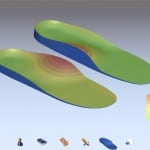
Custom made orthoses from a 3d model of your foot
Having confirmed our diagnosis, we began looking after Mary with the best quality care available. Firstly before leaving we strapped Mary’s foot to take pressure off the overused tendon, we ordered her a specialised brace for the short term again an immediate relief in pain and after a discussion we also prescribed a pair of custom made orthoses. These will stop the overuse of the tendon by reducing the excessive pronation.
Mary’s results have shown that unlike some people who wait too long, Mary came in quickly and has avoided the need for surgery, which can be necessary if this is left too long and not caught quickly. Her orthotics were manufactured in A Step Ahead’s own orthoses laboratory using our custom made milling system and hand finished by our technicians. After a fitting and wearing her orthoses for several weeks we also began a series soft tissue therapy sessions with our team to help rehabilitate the damaged muscle.

New 3d scanners create perfect models of your foot
The good news – Mary’s ankle and foot is now back to normal and she has started back to walking slowly! After we designed a ‘return to exercise’ program for her to follow, she has reduced the chance of re-injuring her foot. Rehab took quite some time but was made easier by Mary’s compliance and her willingness to work hard at getting better.
Its always rewarding for our team to meet people like this who are striving to get back to health!






 Sydney morning herald to Dolly magazine!
Sydney morning herald to Dolly magazine!








 Dr Brenden’s White paper report on the “6 Reasons You Won’t Beat Heal Pain” outlines what’s stopping you from beating this and tips on how to stop it in its tracks!
Dr Brenden’s White paper report on the “6 Reasons You Won’t Beat Heal Pain” outlines what’s stopping you from beating this and tips on how to stop it in its tracks!